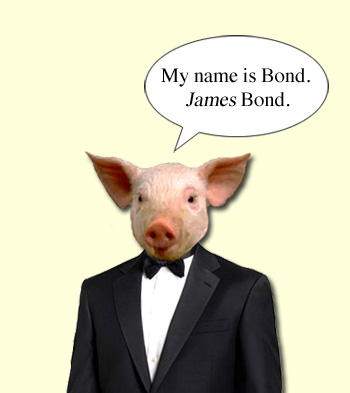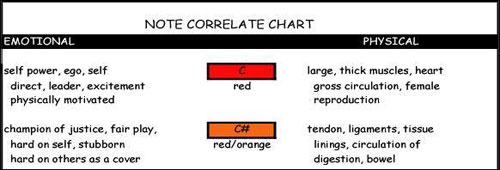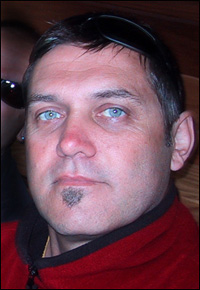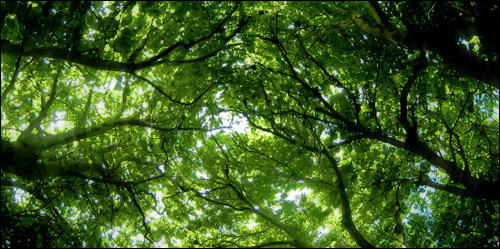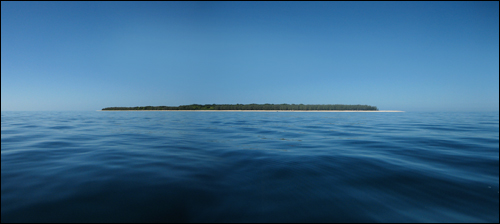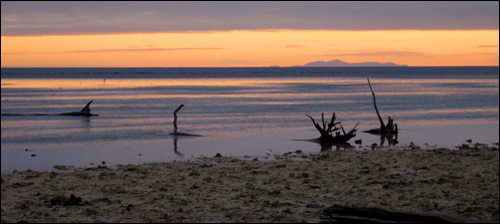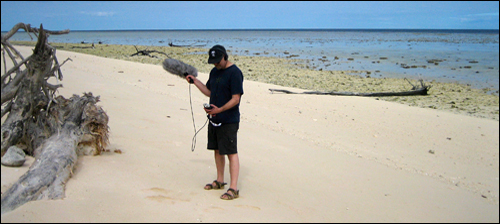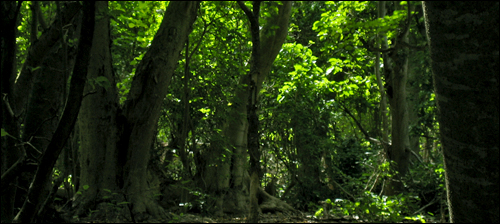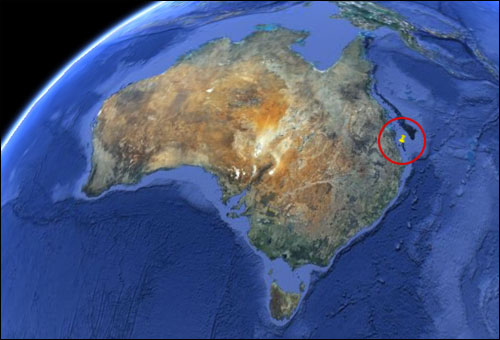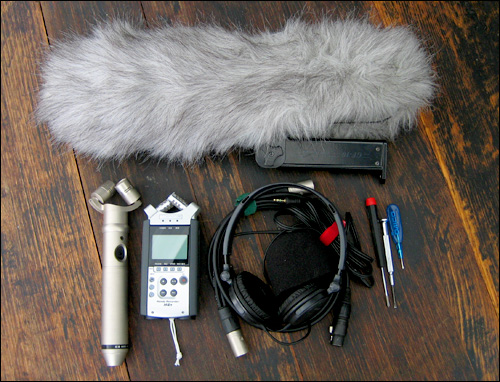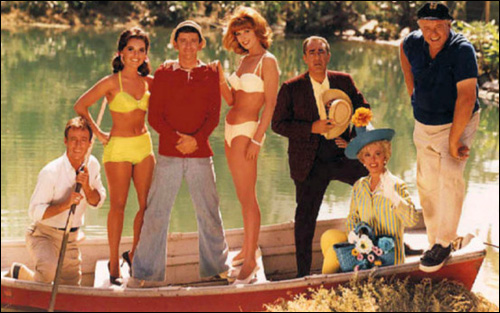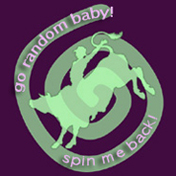Mon 6 Sep 2010
What Sound Does a Theremin Make?
Posted by anaglyph under Hokum, Idiots, Skeptical Thinking, Sound, Technology, WooWoo
[67] Comments
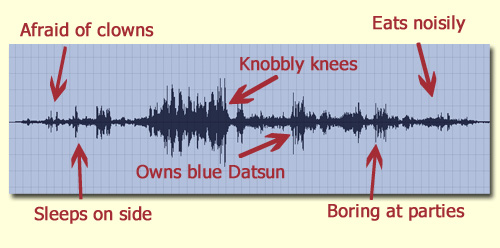
If you answered wooooooooooooo… to the title question, then you were entirely correct! Yes that’s right – today’s post features woo and sound, two of my most favourite subjects.
Well, as we all know, it seems that for treatment of their medical ailments, more and more people are turning to ordinary water, coloured water, crystallized water, flower water, needles, colours, smells, lack of food, enemas and just about every other nutty thing under the sun except actual medicine.
It was only a matter of time before someone realised that there was a niche for an ‘alternative’ medical treatment based on sound. Today on The Cow, I will examine one such treatment ((Oh yes, there are many more than just one. Perhaps I will cover Tama-Do at some later stage…)) – something named Human Bioacoustics, the amazing cure-all featured on a site called NutraSounds. ((Oh dear. Already with the dumb.)) Human Bioacoustics was created by a personage named Sharry Edwards™, ((Yes, that’s right, she’s trademarked her name.)) who claims that her process ‘has unlimited health and wellness potential.’ Unlimited! Human Bioacoustics can make you weller than well!
BioAcoustics Voice Spectral Analysis can detect hidden or underlying stresses in the body that are expressed as disease. The vocal print can identify toxins, pathogens and nutritional supplements that are too low or too high. In addition, vocal print can be used to match the most compatible treatment remedy to each client. The introduction of the proper ((If you don’t do it ‘properly’, it won’t work…)) low frequency sound to the body, indicated through voice analysis, has been shown ((By whom?)) to control ((‘Control’? What does that mean?)): pain, body temperature, heart rhythm and blood pressure. It has also been shown to regenerate body tissue ((Body tissue regenerates anyway. This means nothing.)) and alleviate ((Alleviate? In what way?)) the symptoms of many diseases (in some cases, even those considered to be incurable). ((Note the equation of the symptoms with the disease itself – a common ploy of pseudoscentific medicine))
Oh yes, there it is! Gobbledigook piled on balderdash layered on crapola. I’ve given you a helping hand with the shifty language and vague promises. I wonder why the disclaimer that is hidden away at the bottom of the NutraSound pages in very small print isn’t placed in slightly closer proximity to the above paragraph?
Disclaimer: Human BioAcoustics, as originated by Sharry Edwards, M.Ed., does not diagnose or prescribe for medical or psychological conditions nor does it claim to prevent, treat, mitigate or cure such conditions. HBA researchers do not provide diagnosis, care, treatment or rehabilitation of individuals, nor apply medical, mental health or human development principles.
Hmm. On the one hand Human Bioacoustics cures everything and then, somehow, when it comes down to a real-world, write-your-name-here-in-blood guarantee, it doesn’t. Is Ms Edwards a little nervous about getting her ass sued off, one wonders? She certainly isn’t shy of making unsubstantiated claims though. In big bold print on her bio page:
Edwards was named scientist of the year in 2001 for her work in BioAcoustic Biology.
Really? Scientist of the Year! Very impressive! That’s not something you could just make up! Let’s see what teh internets have to say about that! Oh, right, here it is. The award was presented to her by a body called the International Association of New Science. Funny… all those links are either dead or seem to point back to organizations with which Sharry Edwards™ has affiliations. She was given the award by her pals! ((Searching on International Association of New Science turns up some frightening crosslinks. The IANS appears to have been concocted by Dr Brian O’Leary a UFO ‘expert’ and Cleve Backster, who is quite famous for writing books about communicating with plants. The frightening part is that the IANS name also appears in conjunction with legitimate research into climate change. These people are being given government money for their idiotic beliefs… If you follow the links even further, it’s worse – there are ties to the whole anti-vaccination hoodoo and a whole other world of medical stupidity.)) Elsewhere she claims that all her work is peer reviewed. I think she is (obviously purposely) conflating the concept of scientific peer review (which is a strenuous intellectual process designed to weed out errors and bad science) with the idea that you get a few of your ‘peers’ to peruse what you’re doing and give you the thumbs up. ((This is what really gets my goat with these kinds of people – they shamelessly trade on the credentials that genuine science affords, while simultaneously bashing all its accomplishments as worthless. If you adopt science, you adopt science. Play properly by its rules, not by some airy fairy ones that you make up yourself! Otherwise, stay off its turf and name yourselves as the magic peddlers that you really are.))
(By this logic, you, my Faithful Cowpokes, could all agree that I was Scientist of the Year and I could boast that on Tetherd Cow! In fact, what a good idea – I need a few endorsements so that I too can plaster it across my banner! Feel free to wax lyrical!)
The phenomenal power of Human Bioacoustics is completely free to all and sundry in the form of the nanoVoice™ ((Yep, Ms Edwards has her whole racket trademarked up the wazoo.)) program, software which is, sadly, only available for PC. ((Well, technically it could be installed under Virtual PC on my Mac, apparently, but I ain’t running VPC just for this piece of crap.)) Of course, you can only freely download the ‘micro’ version – you have to pay (surprise) for the real deal. ((Curious, when the organization that produces it boasts that it is ‘non profit’…)) nanoVoice ‘uses frequency-based biomarkers within the frequencies of your voice to allow you an enlightening peek into your Secret Self.’
I bet you didn’t even know you had ‘frequencey-based biomarkers’ hidden inside your voice. I certainly didn’t and I’ve been working as a professional sound person for thirty years.
This is how it works, as near as I can make out from reading about it: you load a recording of your voice into the program and it analyzes the ‘frequencies’ ((There are those goddamned frequencies again. Teh woo just loves the vibrations and the frequencies!)) and spits out a bar graph in a rainbow of colours. Here’s what the colours supposedly mean (click to get the full chart):
Gee, now what do all those vague waffly non-specific phrases remind me of… oh, that’s it – the local paper’s astrology section! There are some classic howlers:
Yellow (E): ‘uses words first to convey messages and meaning’
Oh yeah, like that’s not going to apply to everyone except mute people.
Green/Blue (G): ‘likes to mix and manage the physical aspects of life’
What? That could mean just about ANYTHING.
Blue (G#): ‘wants to make a difference’
Oh please.
The colours are also arbitrarily tied to various kinds of organs and body parts. When I say ‘arbitrarily’ I mean that there is absolutely no scientific substantiation to say that, for example, the colour green has anything to do with your kidneys, or that the colour blue ‘retrieves nutrients from your bowel’. This is just utter, unmitigated hogwash. And Sharry Edwards™ knows it, or else she wouldn’t have put the comprehensive disclaimer on her site. ((I’m sure she justifies the disclaimer by saying that she ‘was forced to do it’ by the ‘system’ which ‘persecutes her for her beliefs’. A song that we’ve heard many times before.))
For an example of nanoVoice’s extraordinary powers of deduction, you can amuse yourself by visiting an analysis of Mr Mel Gibson’s phone ‘conversation’ with his estranged wife Oksana Grigoreiva, in which he uses bad language, racist terms and is generally an obnoxious prat. I want to say two thing here: first of all, the pages of unbelievable rubbish that you will find here could be attributed to just about anyone, viz:
You have an unusual sense of time. Not having all the information needed to make a decision stresses you. Your reputation is very important to you. You will go to great lengths to protect it. It is important to you that spirituality be a part of everyday life. You think that feeding the mind is just as important as feeding the body. You are aware of how painful thoughtless words can be. You push yourself and others to finish the job. You love new ideas that mean you can have a project to work on. A sense of belonging is important to you.
… and secondly, these ‘frequency’ analyses were made from a telephone recording. To someone like me who knows anything about sound, this constitutes the epitome of ridiculousness. Telephones severely restrict the frequencies of voices, in order to squeeze intelligibility down the lines. Ms Edwards is asking us to believe that her software uses inherent voice ‘frequencies’ to make its divinations, but is simultaneously independent of frequency restrictions. It is the utmost peak of buffoonery. Not only that, it demonstrates without any equivocation, that Sharry Edwards is completely ignorant about how sound works. ((Oh, I’m sure she’d come up with some piece of silliness to ‘explain’ how she can get readings from a telephone conversation – I’d be disappointed if she couldn’t!))
Like many similar pseudoscientific concepts, Human Bioacoustics uses as its basic modus operandi the general ignorance of most people in a specific field of expertise. Few people understand how sound works, but to someone like me who does, Human Bioacoustics, nanoVoice, ‘vocal profiling’ and the ‘Institute of Bioacoustic Biology’ look about as convincing as a pig in a tuxedo.
